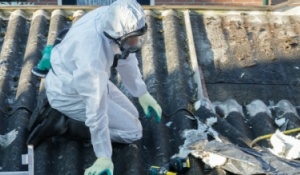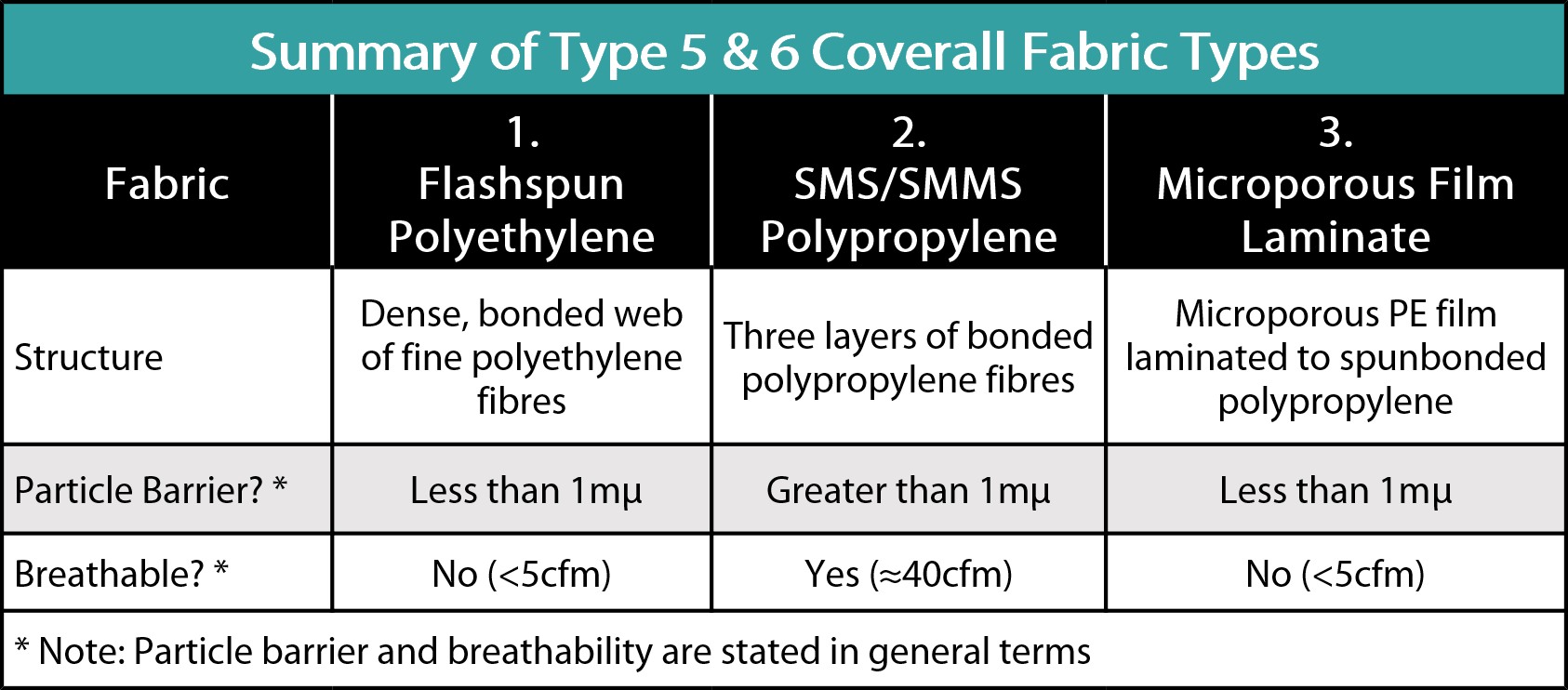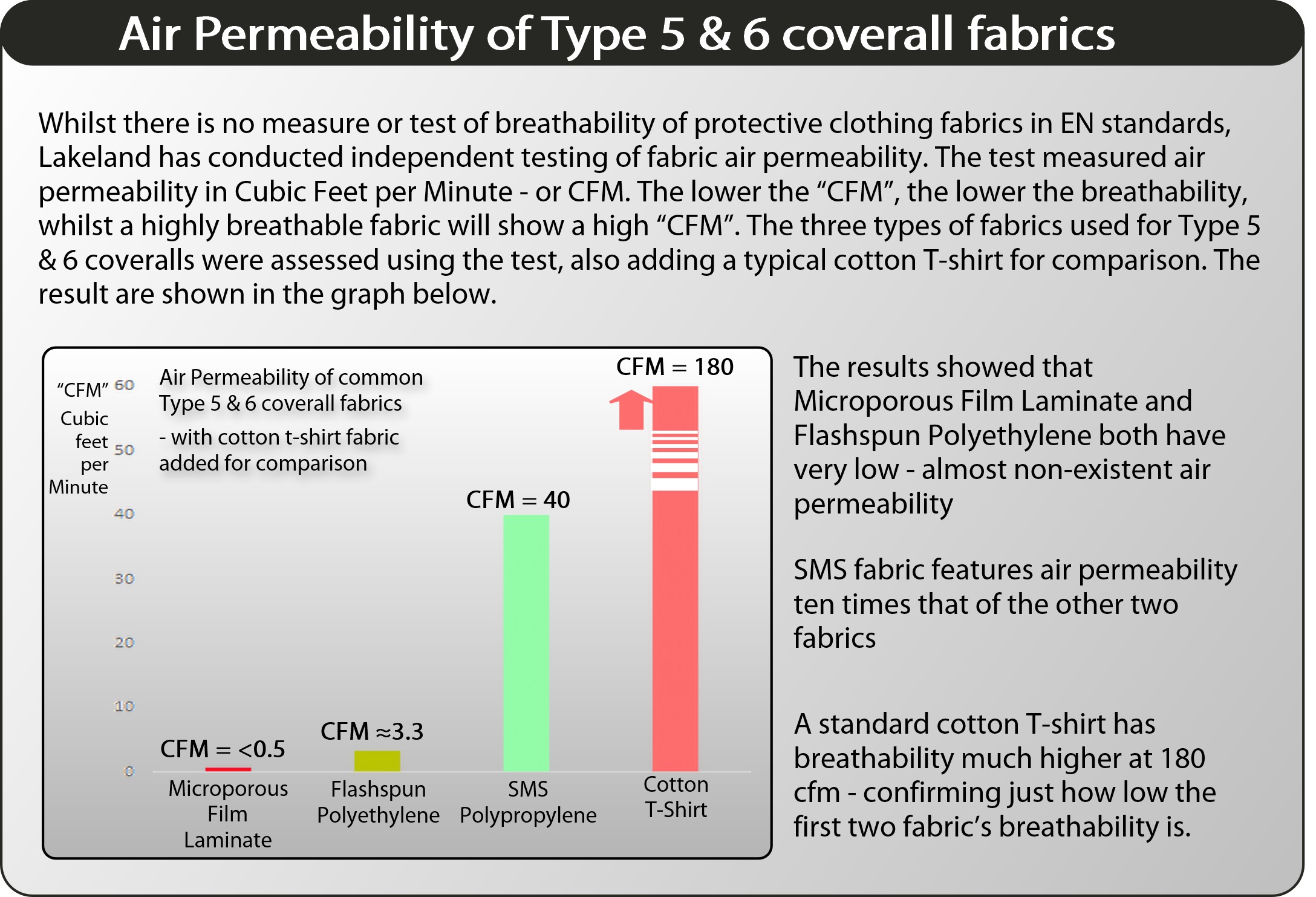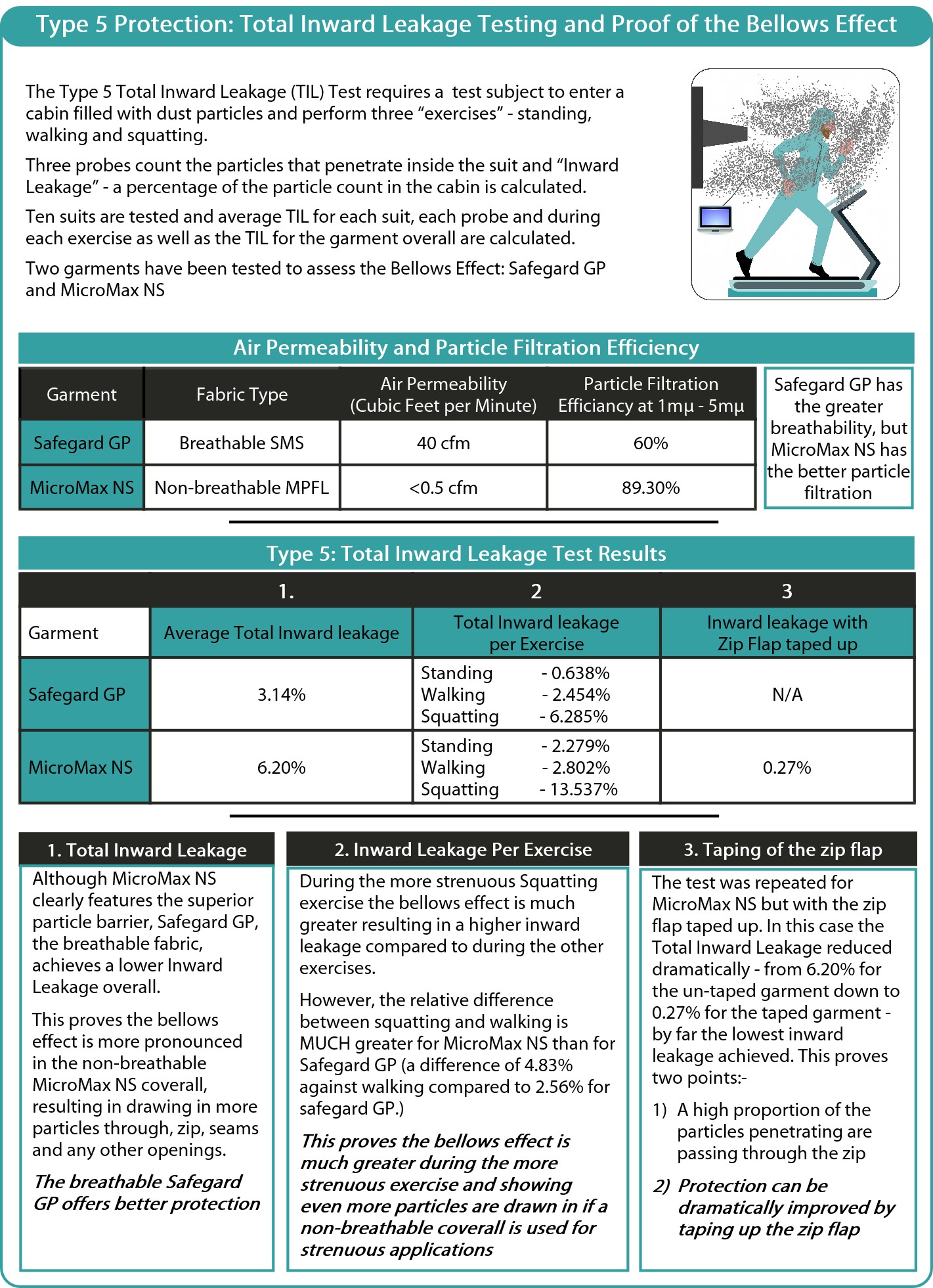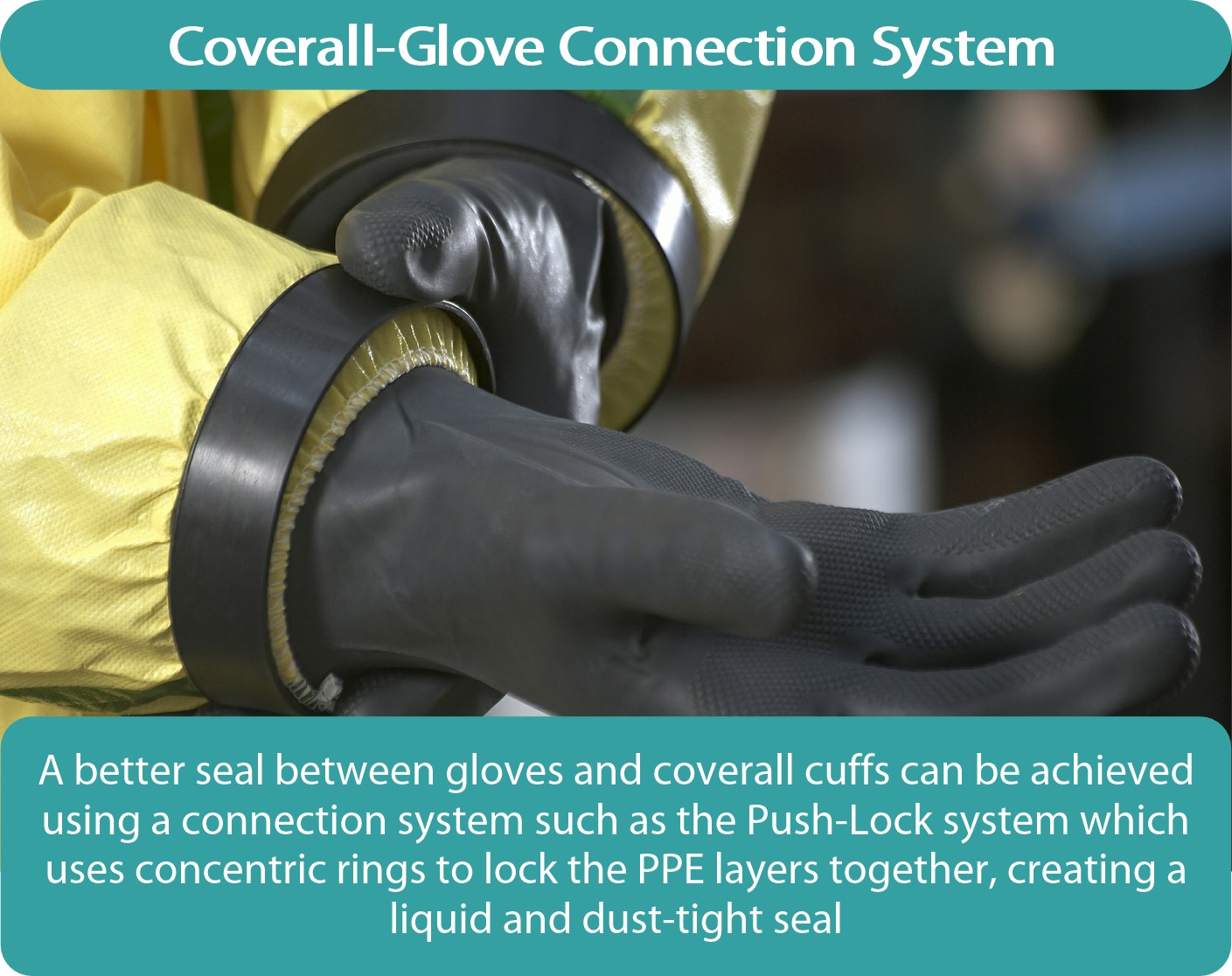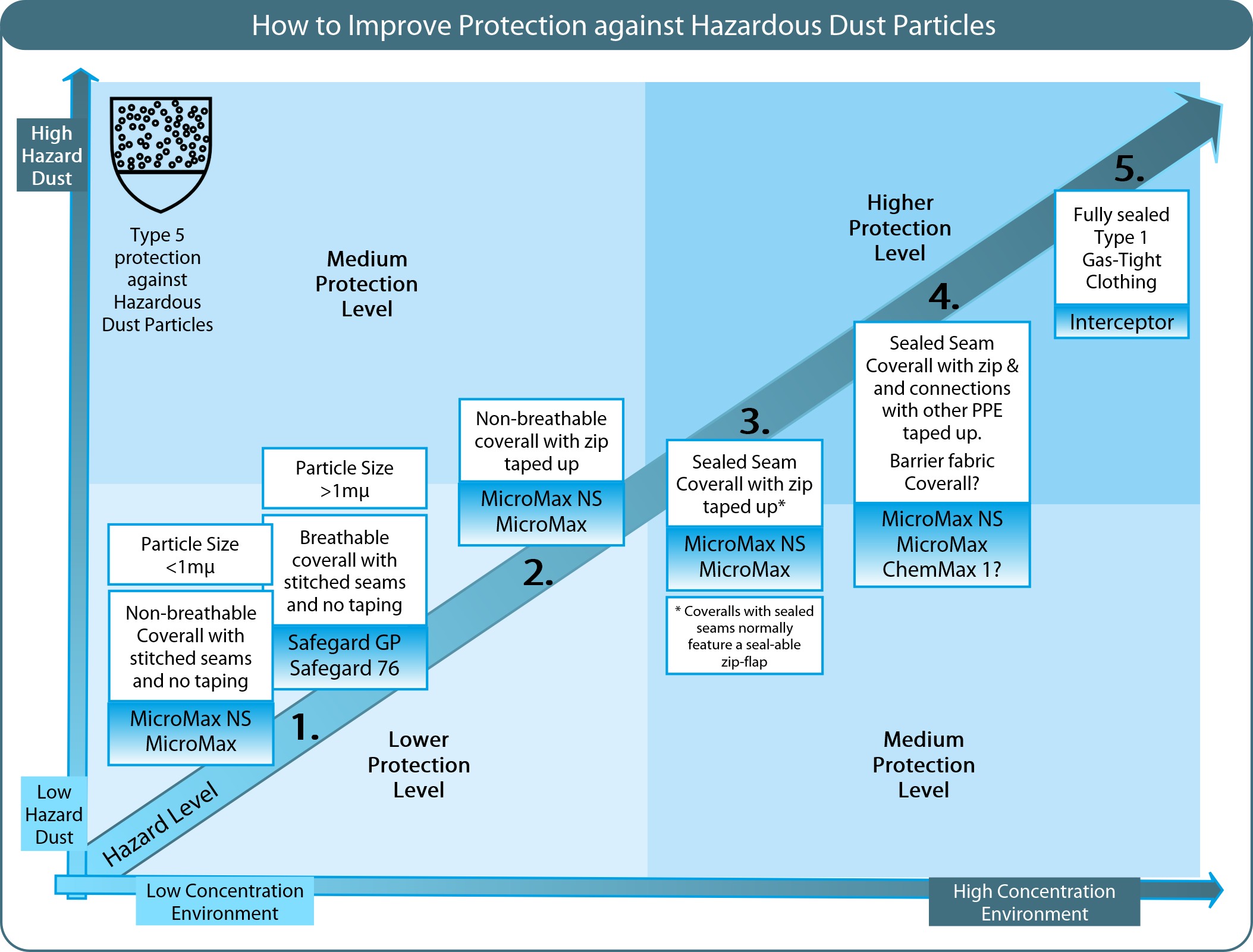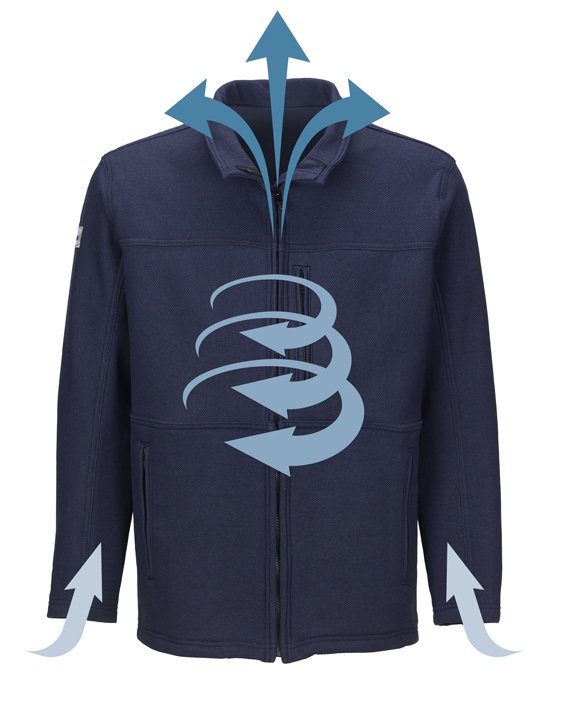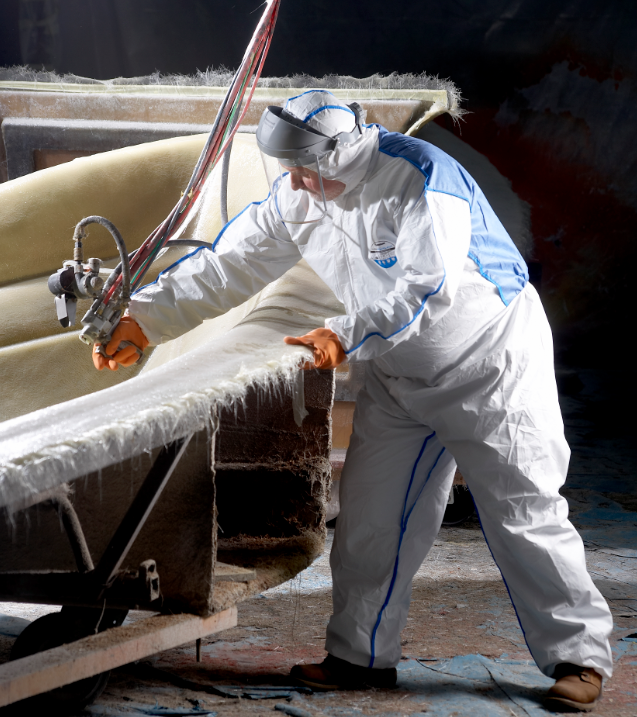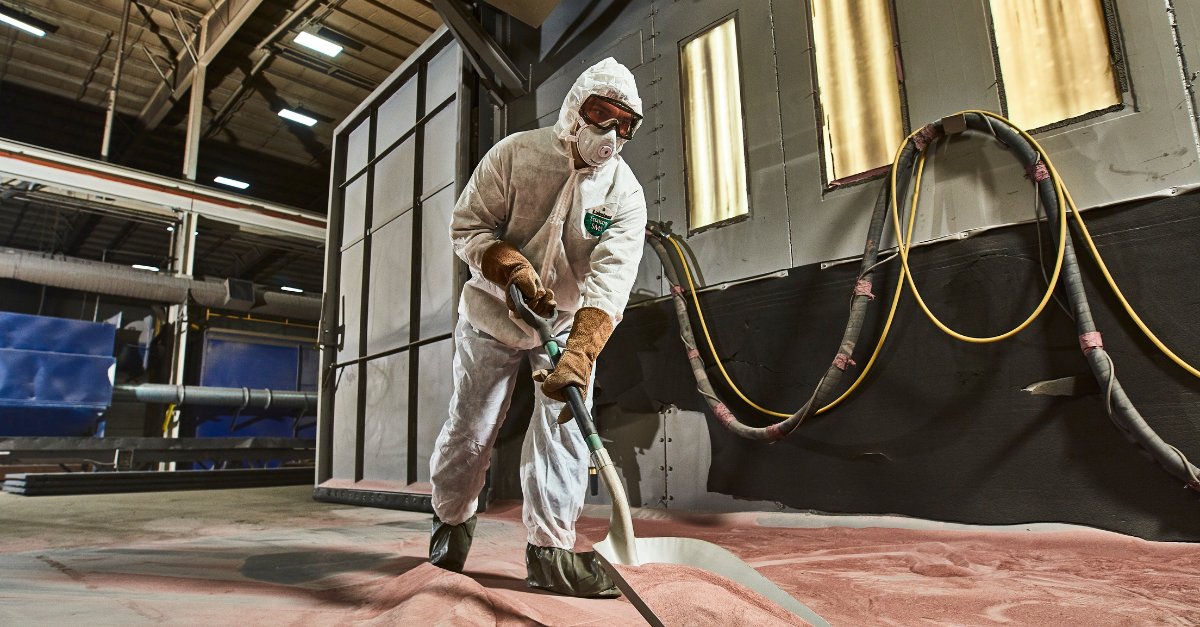The existence of secondary exposure and mesothelioma – when a worker inadvertently takes dangerous asbestos fibers home trapped in his clothing where he and his family can breathe them in, resulting in devastating health problems in workers’ relatives sometimes years later, is now unquestioned. At the same time there is increasing awareness of the hazards presented by silica dust, and even wood dusts are now considered as potentially harmful sensitizers, possibly causing asthma and other respiratory problems. Thus the importance of ensuring the choice of Type 5 dust protective coveralls will prevent dust infiltrating workers clothing has become just as important as ensuring they wear the right respiratory mask.
And yet protection against hazardous dust particles is perhaps one of the least understood types of chemical safety.
But why?
One of the reasons is that protecting against dust particles is different from protecting against liquids. Dust does not behave in the same way as liquids, so safety managers need to take this into account when developing health and safety programs, and selecting garments for protection against them.
This blog highlights five things you can do to maximize your protection against dust particles and what to look for when selecting a Type 5 coverall.
The key difference between liquid and dust protection is this: liquid contamination generally occurs as a result of directional sprays emanating from a particular point (such as a burst valve or cracked pipe).
Liquids will penetrate a suit through gaps if the direction of the spray is correct (such underneath a poorly fastened zip flap) or through holes as a result of the liquid’s tendency to wick (depending on its surface tension). Dust particles, on the other hand, have no intrinsic kinetic energy, meaning they will float freely in the atmosphere, not moving until a current of air carries them.
(Please note, this is a general rule of thumb with some exceptions. Dust particles could be sprayed from a breach in a pressurized pipe (though movement as a result of their own kinetic energy will not last long), and liquids might be in the form of a light aerosol spray (which can behave more like dust particles), but in general the difference applies).
What this means is that dust particles will only penetrate a protective coverall if there is an airflow from outside to inside the suit. The trick to maximize dust protection is to prevent air flowing out and in to the garment. Recognition of this, along with understanding Type 5 dust protection and the finished garment test.
Here are five tips for maximizing dust protection:
TIP ONE: Choose a coverall made of a breathable fabric
Type 5 (and 6) coverall use three types of fabric. These, along with their general and key properties, are shown in the table below. All brands in the market are based on one of these fabrics or a variation or combination of them.
The important point is that only one of these fabrics is wholly breathable – SMS or SMMS polypropylene. The other two, Flashspun Polyethylene (produced by only one manufacturer and known as the brand “Tyvek”) and microporous film laminate (known by multiple brands from many manufacturers – the Lakeland brand being MicroMax NS) have very low air permeability. Low enough that, for practical purposes, they have no breathability at all.
Why does breathability matter?
Breathability has a major effect on how air flows into and out of the garment, including how strong these airflows are.
When a wearer moves around in a disposable coverall during the normal course of work; walking, climbing steps, crouching and so on, the air inside the coverall is constantly pumped around creating micro-changes in air pressure throughout the suit. It’s a little like the pumping action of a pair of bellows, and so it’s known as “The Bellows Effect”. The result is constant air flowing in to and out of the suit through the fabric (in the case of an air permeable fabric), stitch seam holes, zips and gaps between the coverall and other items of PPE.
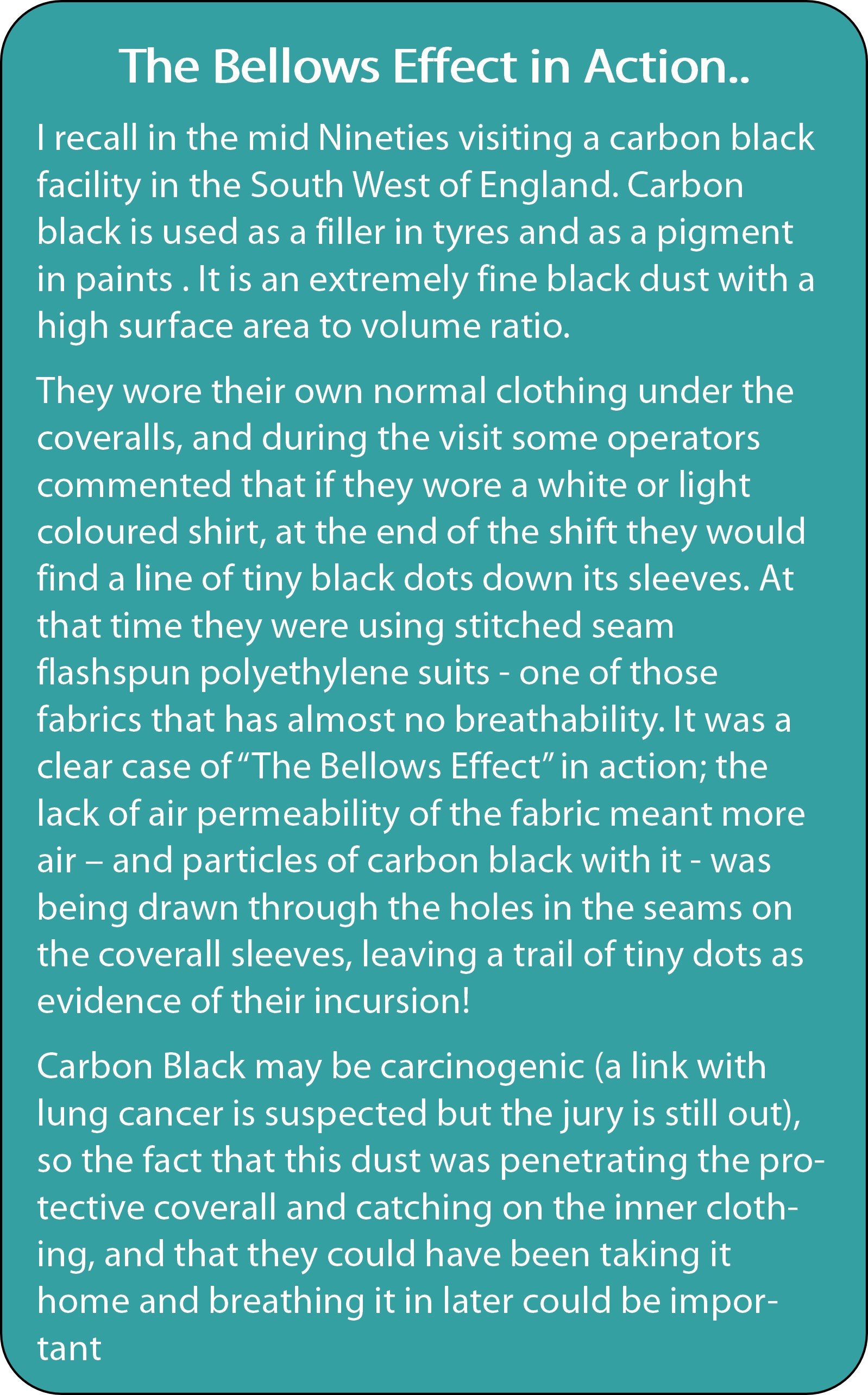
As there’s no opportunity to pass through the fabric, these airflows are enhanced – purely because there is nowhere else for the air to go. The result is where there is air flowing into the suit from outside, dust floating in the surrounding atmosphere will be drawn inside the suit, too.
So, for our first tip, selecting a Type 5 coverall that is constructed using an air permeable fabric can reduce the bellows effect through seam holes, the neckline and so on. This results in less air and fewer contaminating particles being drawn into the suit. Since SMS is the only breathable Type 5/6 fabric, the use of SMS coveralls like Safegard GP may be the best choice and proof of this is shown in the testing below.
“But what about protection? If air can pass through the fabric, so can dust particles!”
To some extent this is true. Though SMS materials have superior breathability, they have a less effective particle barrier. That said, as a general rule, SMS fabrics can effectively filter particles down to a size of 1 micron. Below this the filtration becomes less effective, so it might be necessary to select one of the other two fabrics to ensure suitable protection, as well as take other steps to minimize the Bellows Effect (see below).
For particles above 1 micron in size, however, SMS fabrics should provide perfectly adequate protection and will minimize the bellows effect. It also has the benefit of being more comfortable and generally less expensive (of course, this is all subject to the relative hazard presented by the dust).
TIP TWO: Tape up the zip flap
The panel below explains the whole garment test used to assess the inward particle leakage of Type 5 protective clothing.
The results of this test on different coveralls supports a particular conclusion that – all things being equal – a high proportion of particles that penetrate inside a suit do so through the zip, either through the woven backing material of the zip or through the actual zipper teeth.
This makes perfect sense: the gaps between the teeth of a zipper are probably the largest gaps in a garment’s construction. Thus, and especially if the coverall is of a non-breathable material, taping up the zip flap is a simple way to prevent airflow –and particle penetration – through the zip.
For proof of how the Bellows Effect has real world implications, and of how simply taping up the zip flap can dramatically improve overall protection, see the panel below for details on the Total Inward Leakage (TIL) testing of breathable (Safegard GP) and non-breathable (MicroMax NS) fabric coveralls.
TIP THREE: Choose a coverall with sealed seams
Having minimized airflow and ingress through the fabric by choosing a non-breathable coverall, and through the zip by taping it up, the next best option for our dust contaminated airflows is to pass through the seam holes in the stitched seams of a standard Type 5 coverall.
The obvious solution is to tape up the seams of the garment in the same way as the zip flap.
But, in reality, this would be prohibitively time-consuming and clumsy.
Fortunately, manufacturers often provide an option in which this has been done for you, such as Lakeland’s MicroMax TS. The seams are stitched and then taped over to seal up all the holes, thereby preventing airflows – and dust particles – passing through.
Such coveralls also tend to have double-sided tape on the zip flap, enabling it to be sealed without the use of additional tape.
TIP FOUR: Tape up connections between the coverall and other items of PPE
So now we have a non-breathable coverall with its zip taped up and seams sealed. There can be no penetration through fabric, zip or seams. Where else can the Bellows Effect apply?
The answer is through any gaps between the coverall and the body of the wearer or via gaps between other PPE worn (through the cuffs, the ankles and the elasticated face). The only way to manage this is to tape up these gaps in the same way you have done on the zip flap.
So far we’ve identified four tips to improve and maximize the protection against dust particle hazards provided by your Type 5 coverall. These are progressive steps, each improving the level of protection achieved, but what about our fifth tip?
Before we go into our fifth and final tip, first ask yourself where your particular application fits on a notional scale of protection defined by these measures. The answer will depend on three critical factors:
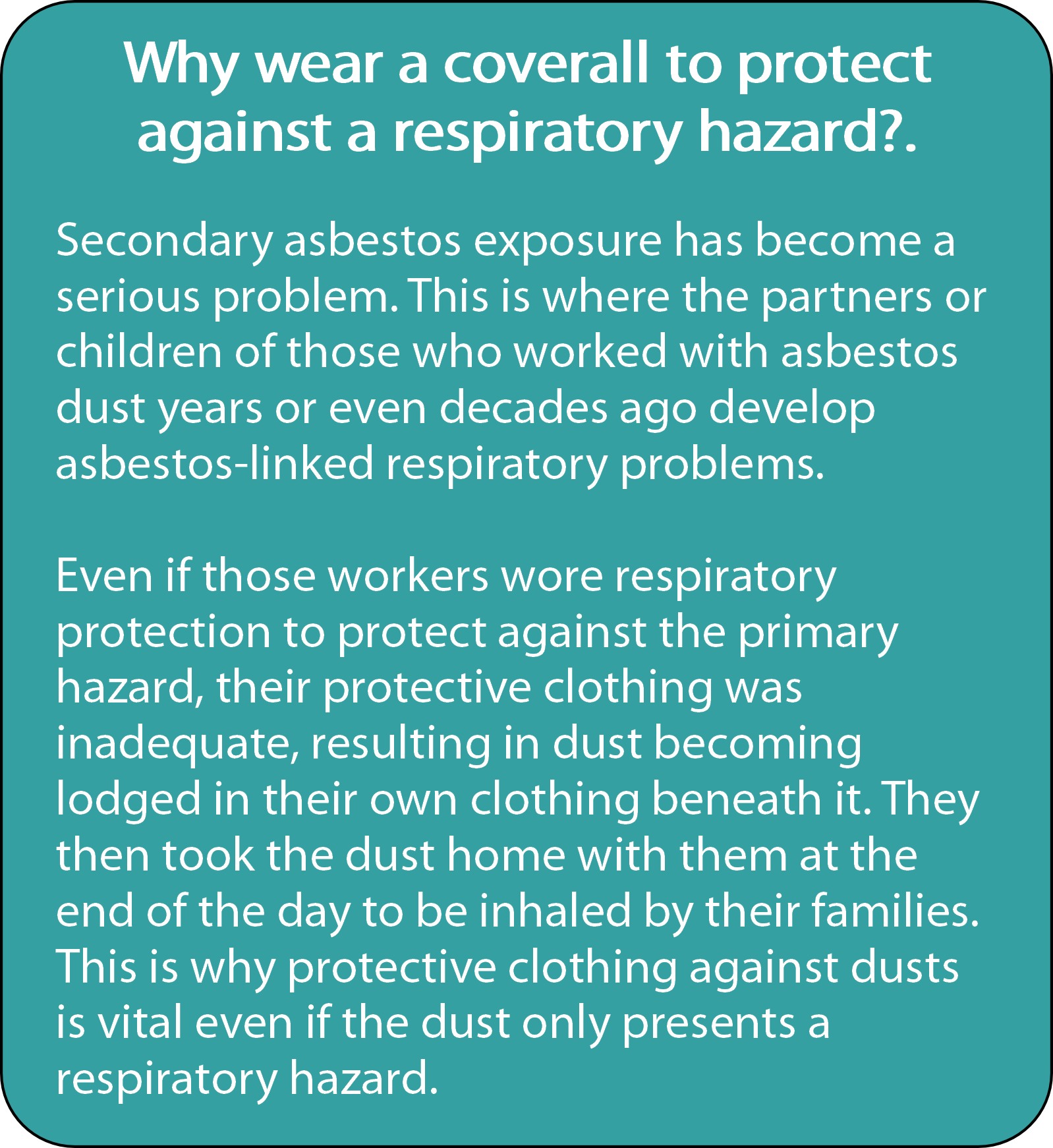
Like any liquid chemical, some chemicals in dry particle form are more hazardous than others. An example of a highly hazardous dust is asbestos, a particle that has proven to be a serious respiratory hazard – even in small quantities – causing irreversible damage to lungs and eventual death.
2. The relative size of the dust particle
Clearly, the smaller the particle the more easily it will pass through holes or gaps in the garment construction. In general terms, breathable fabrics should not be used with particles smaller than 1 micron (again, subject to the relative hazard it presents).
Furthermore, particle mass is also important; lighter particles will float and follow airflows more easily, heavier ones less so.
So particle size, mass and weight are also important to consider.
3. The concentration of dust in the environment
The amount of dust floating in the air around a worker has a direct impact on the volume that might penetrate the suit. In the Type 5 test, “Inward Leakage” is calculated as a percentage of the ambient dust concentration in the spray cabin, so even if inward leakage is less than 1%, if the concentration of dust is very high that could still amount to a high level of penetration in real terms.
Another factor affecting this will be the ventilation in the environment. With good ventilation, or even artificial ventilation drawing dust away from the work area, levels can be controlled and reduced. Where this is not possible, however, and higher concentrations will prevail, this should be considered when assessing the hazard level.
The relative hazard of any application can be assessed by considering these key factors; the hazard, particle size and/or weight and the relative concentration in the work area.
If the dust presents a relatively low hazard, is relatively large, and there is a low concentration in the work area, a lower level of protection can be selected. This could be a simple Type 5 coverall; taping of zips, joins or sealed seams may not be necessary.
On the other hand, if either the hazard or the dust concentration is high, or the particle very small, a higher level of protection might be needed in addition to implementing tips 1 to 4.
Finally, if the concentration and hazard presented by the dust are high, the particle very small and light, and the ventilation poor, then the highest level of protection must be chosen.
This leads us to our final tip.
TIP FIVE: Choose a Gas-tight suit.
As we have seen, the point about dust protection is that particles move with airflows. Air is a gas, so in the more extreme cases the best option for maximizing dust protection is the selection of a fully gas tight suit, in which the user is fully sealed from the environment so the possible inward leakage of dust particles is zero.
If you consider this might be a little excessive for dust protection, bear in mind two points:
1. Hazards presented by dust particles are often long term. The consequences of contamination – usually through inhalation – may not be felt for months, years or even decades.
But the fact that no harm is being caused immediately is not an indication that no harm is being done. This is especially worth consideration when a task is repeated regularly over an extended period. This is because small levels of contamination during each individual task can add up to large amounts of contamination over time (as is the case with asbestos).
2. The Type 5 dust protection standard, EN 13982, makes the point clearly in its introduction:
“It is necessary to determine the suitability of type 5 clothing for each specific chemical substance and its exposure limits in relation to the inward leakage of the type 5 garment. Hence, it is possible that this type of clothing does not offer adequate protection from aerosols of highly hazardous substances where a type 1 garment might be necessary to obtain the level of protection needed” [SIC].
The Type 5 standard itself clearly confirms that in the worst, most hazardous dust protection applications, a fully gas-tight, Type 1 suit might be required.
These five tips to improve dust protection cover a range of hazard levels from low hazard/low concentration dust through to high hazard/ high concentration applications. Thinking about the actual hazard level presented in an application, what level of protection is needed, and the measures taken to achieve it, can ensure you maximize protection for your workforce.
A summary chart of these five levels of dust protection (incorporating our five tips) is shown below:
* Note: The information in this blog is for general guidance only and following the measures described implies no guarantee of protection in any specific application. There are many factors which might affect the level of protection required and selection of PPE and how it is used should be based on a comprehensive risk analysis and is the final responsibility of the user.

